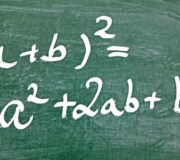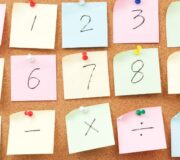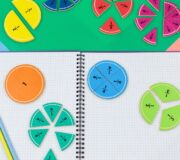KS2 SATs Results 2017: What to Do Next
KS2 SATs results 2017 are now out and according to the official data attainment in reading, writing and Maths has increased. The start, do we think, of year on year improvement since the introduction of the new National Assessment testing regime?
Here’s what you need to know about the national KS2 SATs results 2017, what it means for your school, and how to understand your KS2 SATs results and explain and discuss them with teachers, parents and children, whether they’re good or bad.
Update: New blog on the KS2 SATS Results 2019 now available.
The national KS2 SATS results 2017
To remind you, in case you need, it, these are the headline statistics for KS2 SATs in 2017:
- 61 per cent of pupils met the expected standard in reading, writing and maths (compared to 53% in 2016)
- 71 per cent of pupils achieved the expected standard in reading
- 76 per cent of pupils achieved the expected standard in writing, which is teacher assessed
- 75 per cent of pupils achieved the expected standard in mathematics
- 77 per cent of pupils achieved the expected standard in spelling, punctuation and grammar (SPAG)
Maths KS2 SATs results 2017 compared to 2016
This year 75% of children achieved the expected standard in the 2017 KS2 maths test whereas last year 70% of children passed the test.
The pass mark for the three maths papers combined this year went down by 3 marks, meaning children had to get 57 marks out of a possible 110 in order to get the 100 scaled score. The average scaled score in maths has increased from 103 to 104.
It will be interesting to see what the national picture is on where the marks came from in the maths test. Take a look at our question level analysis on the KS2 SATS papers 2016 to see how this can inform your Year 6 SATs revision. (2017 SATs analysis due very shortly.)
The arithmetic test, now in its second year, is viewed by many as an easier way to get more marks as children use calculation skills alone, rather than comprehension skills which are needed in the reasoning tests, on which generally pupils struggled more.
To be sure you’re on the right track for 2018 SATs, make sure you’ve read and understood our analysis of the Maths SATs questions in the KS2 SATs papers 2017.
Are you considering our 1-to-1 maths interventions for your school?
If you’re looking for a way to make a drastic improvement in maths attainment this year, particularly for SATs, you can take advantage of our KS2 SATs Intervention Programme now.
Book your no commitment 10 minute demo to discover the impact our 1-to-1 interventions can have for your pupils – it’s never been easier or more affordable. Call us on 0203 771 0095 or contact us here to learn more about how we can help turbocharge maths in your school, even for low prior attainers!
What was your KS2 SATs experience in Maths?
In our school, the majority of the children who passed got 30 or more marks out of 40 in the arithmetic test. Nearly all of them also scored higher on the first reasoning paper (paper 2) than on the second one (paper 3) giving credence to the views that the second reasoning paper was more difficult (take a look at our review of KS2 SATs 2017 for more detail on this).
KS2 Reasoning Papers
It is worth bearing in mind that Reasoning 2 was the last test taken and fatigue may have set in by that point! Even so, many of the children who passed scored upwards of an average of 20 marks on the reasoning papers. Third Space have created two sets of free maths SATs papers Key Stage 2 this year that can help prepare pupils more effectively for answering multiple questions in a SATs format. Often it’s just a case of building up the stamina.
Download free SATs Practice Papers Pack 1 (1 Arithmetic, 2 Reasoning)
So now what?
Support your staff regardless of KS2 SATs results 2017
Remember, before thoughts turn to reporting to parents and letting children know their test scores, key staff members will need their leaders’ support. Especially the ones who’ve worked in Year 6. If results are good, then there is cause to celebrate. They deserve a little pat on the back, at the very least!
If the results are not as expected or desired then, putting aside personal thoughts and feelings, it is a leader’s responsibility to help staff come to terms with disappointment first and foremost.
KS2 SATs are a whole-school effort and the responsibility for results should not fall solely on the shoulders of the Year 6 teachers. For any kind of productive follow-up, teachers will need to feel trusted and supported by their leaders.
Year 6 SATs Wellbeing Guide
How to make sure your school takes an emotionally healthy approach to KS2 SATs and how best to support your pupils, teachers, and families
Download Free Now!Conduct a post KS2 SATs results marking review
There will always be those children who get a scaled score of 99. Those who have missed out on the pass mark by one or two marks. For these children, it is worth spending some time reviewing the marking.
It’s possible to print out the scripts from the NCA tools website and use the SATs mark schemes to check whether they have been accurately marked. On some occasions, marks can be found which will take the child beyond the pass mark. Though do bear in mind that test markers have a different mark scheme to the one that is published.
With regards to submitting a review of marking, the official information from the Assessment and Reporting Arrangements document (ARA) reads:
“Schools can apply for a review of marking if they believe there is evidence that a mark scheme has not been applied correctly or a clerical error has occurred. The deadline for applications is Friday 14th July. Schools will be informed of the outcome of review applications on NCA tools on Monday 4th September.”
Note to reader: I have been told by an anonymous source who marked the tests this year that there have been problems with marking, so it is well worth spending some time checking for mistakes.
Further note: Some readers may also be aware of the #SATsshambles hashtag on twitter around certain marking inconsistencies. For more on this, see this TES article.
Report KS2 SATs results sensitively to children and parents
Naturally, children will want to know their scores, and it is up to individual schools to decide how they will deal with this. Sensitivity is obviously key – no one would consider reading out a list of scores in front of the whole class.
As such, you should consider alternative approaches. For instance, some schools give Year 6 teachers release time to sit with each child and explain their test results alongside teacher assessment data. This gives staff an opportunity to show their children that the test is not the be-all-and-end-all. It also lets them show them how what they know of the child throughout the year matters too.
Schools are also required to provide a written report which includes results of national curriculum tests (including the scaled score) alongside teacher assessment judgments (see sections 9.1 and 9.2 in the ARA).
Send a KS2 SATs results letter home
In the past few years, it has become popular for schools to send an accompanying letter explaining test results. These letters often detail how SATs only tell part of the story and explain how their children have achieved so much more than just a score during their time at primary school.
Some of these have even gone viral on the internet! This approach certainly sends an appropriate message, but is down to the headteacher’s discretion – and creativity!
Remember, as the ARA also states, “Headteachers must make arrangements for parents to discuss the report with their child’s teacher, if the parents request it.”
Learn from your primary school’s KS2 SATs results
Perhaps the most important and most productive post-SATs results activity is to analyse what went well and what could be improved on.
Official question level analysis isn’t available yet, but as soon as it’s out, we will be updating analysis of the 2016 Maths SATs questions to support Year 6 SATs revision. But a general read-through of a few papers (particularly of children from target groups) will begin to show positive and negative trends in the tests.
You can also read our review of the SATs results for 2016.
Finally – look on the bright side of your 2017 KS2 SATs results!
It’s easy to forget to look for the positives, particularly with a bad set of results. However, they will be there. Successes for particular individuals or pupil groups, or certain complete tests that have gone well for your cohort are all causes to celebrate.
It’s also worth looking at whether or not test data backs-up teacher judgments. If teacher judgments have shown good progress for your Year 6, and the test data matches, then progress made can be celebrated even if attainment isn’t ideal.
Importantly, the more negative trends can begin to form part of your plan for next year and can even inform your work with Year 5 children. It’s an important part of the process not to just dwell on what went wrong, but to think forward to how to do it right next time.
DO YOU HAVE PUPILS WHO NEED MORE SUPPORT IN MATHS?
Every week Third Space Learning’s specialist primary maths tutors support thousands of students across hundreds of schools with weekly online 1 to 1 maths lessons designed to plug gaps and boost progress.
Since 2013 these personalised one to one lessons have helped over 150,000 primary and secondary students become more confident, able mathematicians.
Learn about the SATs revision programme or request a personalised quote for your school to speak to us about your school’s needs and how we can help.




